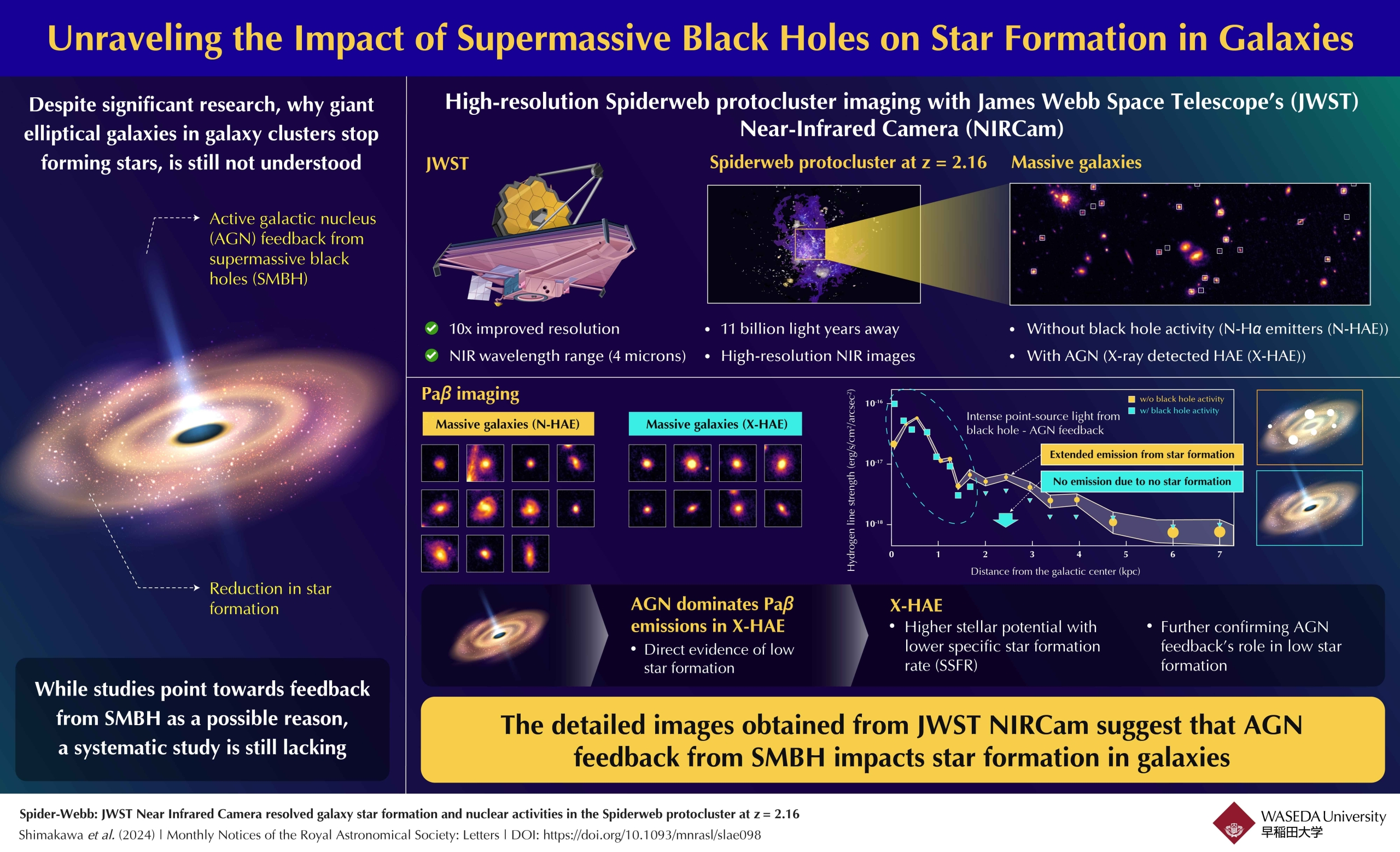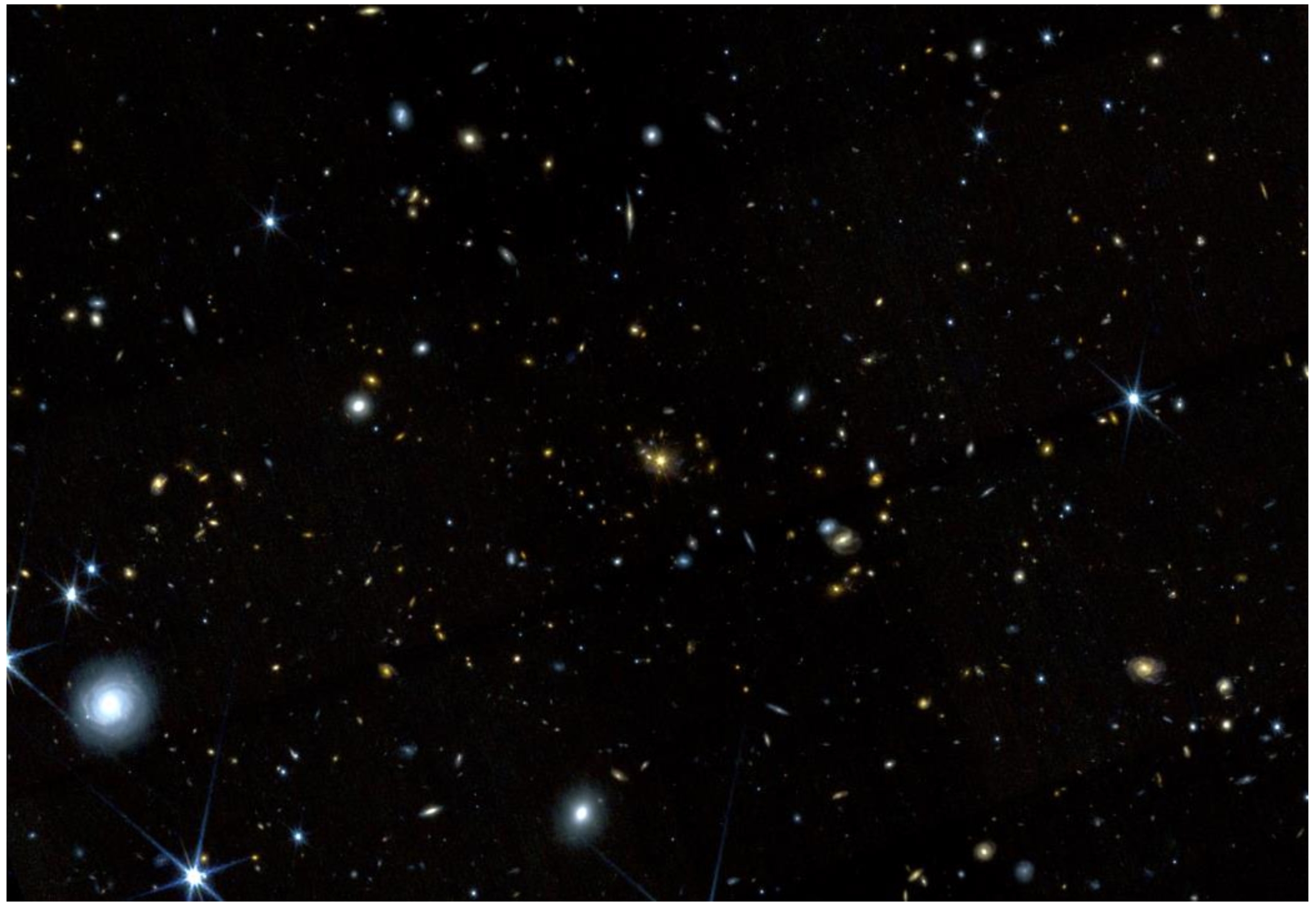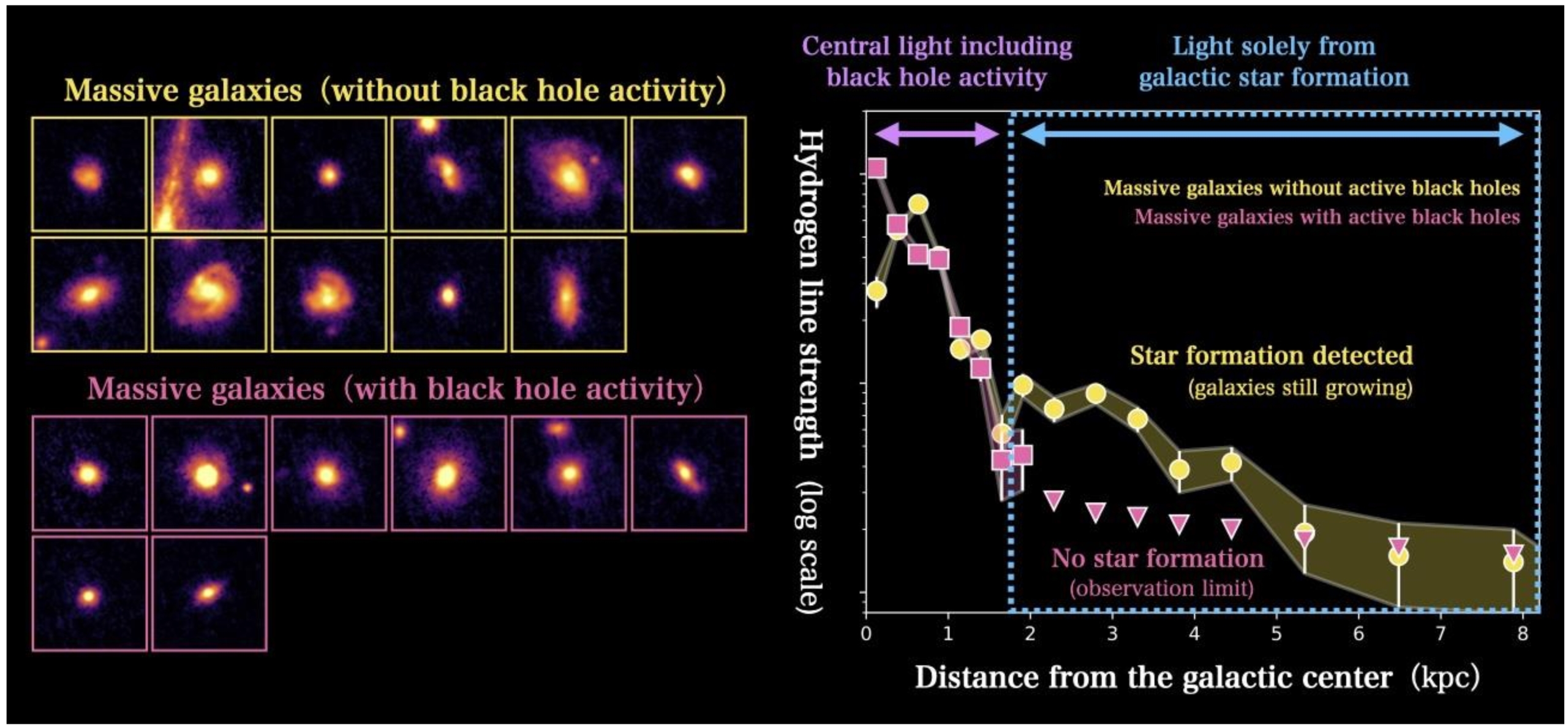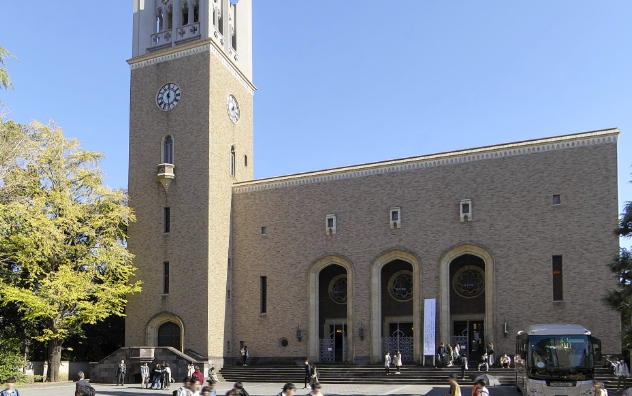Supermassive Black Holes Halt Rapid Construction in an Ancient Celestial City
Wed, Dec 18, 2024-
Tags
Supermassive Black Holes Halt Rapid Construction in an Ancient Celestial City
The James Webb Space Telescope has captured a group of massive galaxies ending their growth due to supermassive black holes about 11 billion light years away

Results from the James Webb Telescope near-infrared camera clearly show that massive galaxies with active galactic nucleus feedback from supermassive black holes have lower star formation.
Galaxy clusters—the big cities of the universe—are home to many giant elliptical galaxies that have completed their growth and are not forming stars. However, it is still unclear what has shut down star formation. In a new study, researchers utilized the James Webb Space Telescope to observe an ancestor of galaxy clusters, revealing the role of supermassive black holes in slowing star formation and allowing them to evolve into giant elliptical galaxies.
Understanding how galaxies form and complete their growth is an area of fundamental focus in astrophysics. The dense regions of the universe, like galaxy clusters, are dominated by giant elliptical galaxies—massive, ancient galaxies that consist of old stars. Although the mechanism by which these giant elliptical galaxies halt star formation remains debated, one theory predicts that supermassive black holes (SMBHs) could play a key role. Their intense energy can suppress the gas supply to galaxies, which may lead to the formation of the giant elliptical galaxies seen today.
Against this backdrop, an international team of researchers investigated massive galaxies in an ancient galaxy cluster known as the Spiderweb protocluster, located 11 billion light years away (Fig. 1), using data from the James Webb Space Telescope (JWST). The research was led by Associate Professor Rhythm Shimakawa from Waseda University, Japan; Dr. Yusei Koyama from the National Astronomical Observatory of Japan; Prof. Tadayuki Kodama from Tohoku University, Japan; Dr. Helmut Dannerbauer and Dr. J. M. Perez-Martinez from the Instituto de Astrofísica de Canarias and Universidad de La Laguna, Spain; along with others who were a part of the team. Their findings were published in the Monthly Notices of the Royal Astronomical Society: Letters on December 18, 2024.

Figure 1: The team observed a galaxy cluster about 11 billion light years ago, which is one of the ancestors of galaxy clusters we see today. JWST Near-Infrared Camera has a spatial resolution ten times better than previous telescopes in the near-infrared wavelength around 4 microns, helping researchers achieve this feat.
The team succeeded in obtaining high-resolution maps of the recombination lines of hydrogen, which indicate the activity of star formation and SMBHs, through the Near-Infrared Camera mounted on JWST. Detailed analysis showed that massive galaxies with active SMBHs exhibit no sign of star formation, meaning that their growth is severely hampered by SMBHs (Fig. 2). The results support the theoretical prediction that the formation of giant elliptical galaxies is linked with SMBH activity in the past.

Figure 2: The team investigated the formation sites of giant elliptical galaxies. As a result, they find that star formation is suppressed along with the SMBH activity in about half of approximately 20 massive galaxies.
“The Spiderweb protocluster has been studied by our team for more than 10 years using the Subaru Telescope and other facilities. With the new JWST data, we are now able to ‘answer the questions’ of understanding and predicting galaxy formation that we have accumulated,” remarks Dr. Shimakawa. He adds further, “This study marks a significant step forward in expanding our understanding of the co-evolution of SMBHs and galaxies in celestial cities.”
Reference
Title of original paper: Spider-Webb: JWST Near Infrared Camera resolved galaxy star formation and nuclear activities in the Spiderweb protocluster at z = 2.16
DOI: https://doi.org/10.1093/mnrasl/slae098
Journal: Monthly Notices of the Royal Astronomical Society: Letters
Article Publication Date: December 18, 2024
Authors: Rhythm Shimakawa1,2, Yusei Koyama3,4,5, Tadayuki Kodama6, Helmut Dannerbauer7,8, J. M. Pérez-Martínez7,8, Huub J. A. Röttgering9, Ichi Tanaka4, Chiara D’Eugenio7,8, Abdurrahman Naufal5, Kazuki Daikuhara6, and Yuheng Zhang7,8,10,11
Affiliations:
1. Waseda Institute for Advanced Study (WIAS), Waseda University, Japan
2. Center for Data Science, Waseda University, Japan
3. National Astronomical Observatory of Japan (NAOJ), National Institutes of Natural Sciences, Japan
4. Subaru Telescope, National Astronomical Observatory of Japan, National Institutes of Natural Sciences, Japan
5. Department of Astronomical Science, The Graduate University for Advanced Studies, Japan
6. Astronomical Institute, Tohoku University, Japan
7. Instituto de Astrofísica de Canarias, Spain
8. Universidad de La Laguna, Dpto. Astrofísica, Spain
9. Leiden Observatory, Leiden University, the Netherlands
10. Purple Mountain Observatory, Chinese Academy of Sciences, China
11. School of Astronomy and Space Science, University of Science and Technology of China, China
- Links














